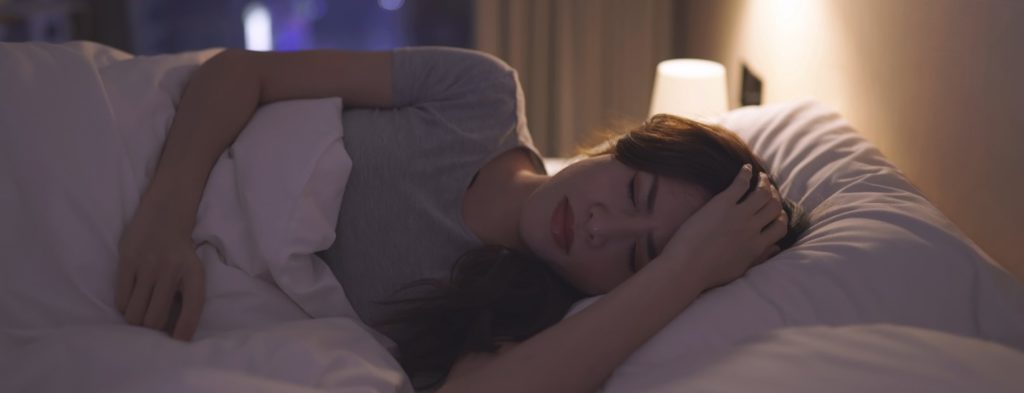We get it, you see a lot of medical newsletters, so hear us out. Twice a month, we’ll highlight important medical news sprinkled with witty commentary, fun facts, giveaways, and more… because learning should be fun! Subscribe to receive the Morning Report directly.
Obesity Intervention: You Are What You Wear?
LONGEVITY LEARNINGS

Move over, Peloton—wearable fitness devices stand poised to take over as the fitness trend of 2022. But do these devices really work?
Researchers conducted a systematic review and meta-analysis to determine the effectiveness of wearable devices in promoting exercise and weight loss among adults with overweight or obesity. The study included 30 trials totaling more than 5,000 people from 11 countries.
When left to one’s own (wearable) devices
Significant improvements occurred in people who wore trackers for at least three months:
- Change in weight (-1.08 kg [-2.4 lbs]), BMI (-0.36 kg/m2), waist circumference (-1.12 cm)
- Steps per day (1,244), change in steps per day (456)
- Change in systolic blood pressure (BP) (-2.57 mm Hg), diastolic BP (-2.10 mm Hg)
Individuals choosing to participate in this study may have been inclined to lose weight, but nonetheless, the trackers did help them achieve modest weight loss, among other benefits.
Key takeaway
Use of a wearable fitness tracker is a reasonable option for patients looking to lose weight and improve their fitness. For as little as $50, patients can purchase a high-quality watch, ideally one that alerts them to prolonged sitting. It’s a worthwhile health investment for the wearer.
Also, we don’t want to speak too soon, but we’re three months into 2022 and wearable devices have not killed off any TV characters. (Too soon, Peloton?) We’ll hold our collective breath to see if Daniel LaRusso receives a Fitbit package from John Kreese in season five of Cobra Kai.
Can 3D Printers and Feces Help Treat Male Infertility and Bipolar Disorder?
EMERGING TRENDS

That title may sound like a Mad Libs sentence, but really, it’s just science thinking outside the box again. Researchers are leveraging the power of 3D printers and fecal matter to potentially offer options to patients dealing with male infertility and bipolar disorder (BPD), respectively. But only time will tell if these advancements deliver a lasting breakthrough or if the hype will be as short-lived as a Tom Brady retirement.
Can a 3D printer offer a solution to men with infertility?
Scientists successfully 3D printed human testicular cells that could one day provide hope to couples struggling with the most severe form of male infertility, azoospermia. Lead researcher Dr. Ryan Flannigan explained, “We’re 3D printing these cells into a very specific structure that mimics human anatomy, which we think is our best shot at stimulating sperm production. If successful, this could open the door to new fertility treatments for couples who currently have no other options.”
Can fecal matter mitigate symptoms of BPD?
Scientists have linked disruptions to the gut microbiome with countless health issues, including BPD. What would happen if the gut microbiome of someone suffering from BPD were altered via a fecal microbiota transplantation (FMT) from a person without a diagnosed mental illness?
In the first of two case reports, a husband gifted his wife, who had BPD, his healthy fecal matter for an FMT. It was the gift that kept on giving because over the next five years, she remained symptom-free, lost 33 kgs, needed no medication, and enjoyed a flourishing career.
The second case report involved a young man with BPD who, after undergoing an FMT, was able to stop his medication regimen without any subsequent mood swings.
These case reports suggest that when it comes to therapeutic potential, human waste is anything but. However, before clinicians start doling out “crapsules”—no, we didn’t make that up—more robust studies are needed to show the effects of FMT in these patients.
Key takeaway
3D printers and excrement are promising tools in the treatment of male infertility and BPD, respectively. We’re in awe of the creative innovations advancing medicine. However, we still need to see if these advancements will move the needle in patient outcomes or if they are as big a tease as Brady’s retirement promise to Gisele.
Cartoon Caption Contest
If you think you have an amusing caption for the following image, please leave your idea in the comments section of this Facebook post by Monday, March 28, at 11:59 pm ET for a chance to win our caption contest.
We will feature the winning caption, chosen by the Pri-Med team, in the next issue of Morning Report. Oh, and we’ll also send the winner a $50 Amazon gift card!* We know we have some creative readers, so give it a go!
*Restrictions apply. See www.amazon.com/gc-legal.

Study Illuminates Harms of Nighttime Ambient Light
LONGEVITY LEARNINGS

“Hello darkness, my old friend.” Poignant Simon & Garfunkel lyric or sound sleep mantra? You’ve likely counseled patients to sleep in complete darkness. Studies have shown that sleeping with ambient light from sources such as TVs and lamps has been linked to health conditions like cardiometabolic disease. But why is that?
The authors of a small prospective study tested the theory that exposure to light while sleeping leads to an increase in next-morning insulin resistance. And if that’s the case, they pondered, what causes this physiologic change? Is it poor sleep quality? Suppression of melatonin? Activation of the sympathetic nervous system (SNS)? Or could it be from the stress of watching the news on the glowing TV? (Okay, we made up that last one.)
Participants were randomly assigned to either (1) one night of sleep in a dim room followed by one night in a room with overhead lighting or (2) two nights in a dim room. Those in the brighter room showed greater insulin resistance on 2-hour glucose tolerance testing the next morning.
A light-bulb moment
What may have led to this change in insulin levels? Neither sleep quality nor melatonin levels seem to have played a role; activation of the SNS was the likely culprit. Researchers found that greater light exposure was linked to accelerated heart rate and lower heart rate variability, or a higher sympathovagal balance. This higher sympathovagal balance was associated with increased insulin resistance the following morning.
Key takeaway
This study further sheds light on the importance of sleeping in a dark or at least dimly lit room. When counseling patients on the tenets of good sleep hygiene, you may want to include the authors’ suggestions: (1) if a dim light is a must for safety, place it close to the floor, (2) consider blackout shades or an eye mask, and (3) sleep far from white or blue light—amber or red/orange is preferred. In time, patients new to this lifestyle may even enjoy turning off their lights and TVs while they slumber, taking in the darkness and the sounds of silence.
Rapid-Fire COVID-19 Updates
COVID QUICK HITS

- Moderna submits amendment to the emergency use authorization for an additional booster dose of its COVID-19 vaccine in the U.S.
- 2022 ACC Expert Consensus Decision Pathway on Cardiovascular Sequelae of COVID-19 in Adults: Myocarditis and Other Myocardial Involvement, Post-Acute Sequelae of SARS-CoV-2 Infection, and Return to Play
- SARS-CoV-2 positivity in offspring and timing of mother-to-child transmission: living systematic review and meta-analysis
Clinicians Give Telehealth a Report Card
PRACTICE PONDERINGS

The dark cloud of this global pandemic has finally begun to lift. And while many of us would like to adhere to the philosophy of “What happens in a pandemic stays in a pandemic,” some things are here to stay: Zoom meetings, curbside pickup, and, according to a new survey, ubiquitous telehealth services.
UnitedHealth Group’s Optum commissioned a survey of 240 clinicians in the fall of 2021 to learn about providers’ opinions on telehealth services.
Highlights of clinician’s responses to telehealth questions
- 55% chose “unrealistic patient expectations for their virtual visit” as their top frustration
- 51% expressed concern that their empathy does not come across on screen
- 23% noted improved patient health because of telehealth services
- 30% said it increased feelings of burnout, while another 30% said it decreased burnout
- 90% acknowledge that telehealth offers patients convenience
- 35% wish they could integrate telehealth with their electronic medical records
- 23% thought a user-friendly mobile app for telehealth platforms would be beneficial
- 93% said they were somewhat or very likely to continue telehealth after the pandemic
Key takeaway
Despite its flaws, telehealth services tap into a level of convenience that many patients and clinicians appreciate. These services have been an essential care delivery mode for two years, and it’s hard to unring that bell. We only hope technology evolves to meet the needs of clinicians and patients.
Lastly, while most clinicians surveyed vowed to continue their telehealth services, leading the opposition are teen doctor Doogie Howser, MD, insisting his 1989 IBM computer doesn’t support Zoom, and Dr. Quinn, Medicine Woman, still searching for an outlet in the Old West.
Interested in more healthcare news? Here are some other articles we don’t want you to miss:
- ‘Alarming’ trend in uterine cancer incidence: high-risk histologies on the rise
- The association of consumption time for food with cardiovascular disease and all-cause mortality among diabetic patients
- American Academy of Sleep Medicine (AASM) statement on Senate passage of permanent daylight saving time bill
- Prognostic role of hypertriglyceridemia in patients with stroke of atherothrombotic origin
- Primary care in high-income countries: how the United States compares
Morning Report is written by:
- Alissa Scott, Lead Author
- Aylin Madore, MD, MEd, Author and Editor
- Shira Page, RN, NP, Author and Editor
Would you like to share your feedback with Morning Report? Drop us an email at morningreport@pri-med.com to let us know how we’re doing.
Please note that the summaries in Morning Report are intended to provide clinicians with a brief overview of an article, and while we do our best to select the most salient points, we ask that you please read the full article linked in each summary for clarification before making any practice-changing decisions.
Enjoying Morning Report? Subscribe & Share It With Your Colleagues!
Is Morning Report for you? It is if . . .
You’re someone who needs quick-hitting, accurate medical news and you’re a fun and witty healthcare professional who wants your news with some flare.
You don’t just need to know about the latest metabolism study–you also need to know how it parallels an Alanis Morissette hit. If you’re reading about acupuncture treatment, you need us to skip the needle puns and get right to the point. We keep things simple, but when we do get into the scientific weeds, we always remind you to check for ticks.
Subscribe to receive the Morning Report directly in your inbox every other Saturday.



